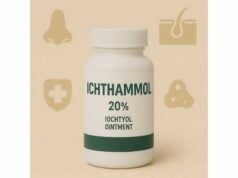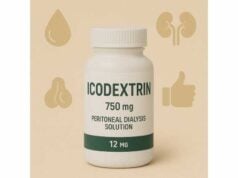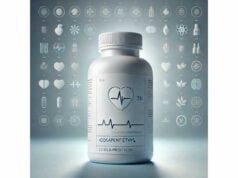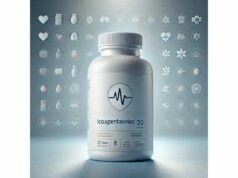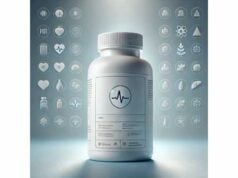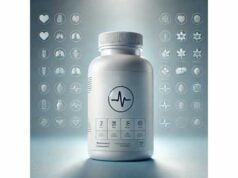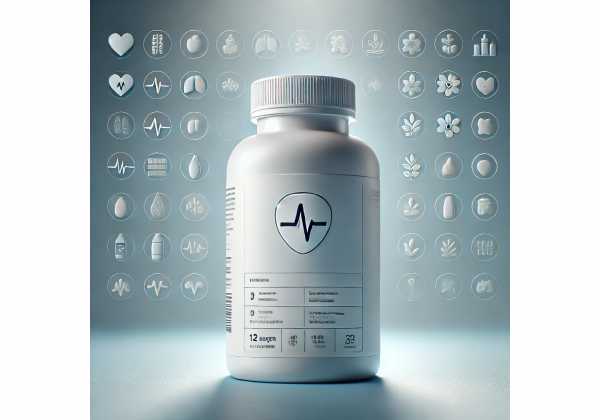
Idursulfase is an enzyme replacement therapy (ERT) for Hunter syndrome (mucopolysaccharidosis type II, MPS II). In people with MPS II, the enzyme iduronate-2-sulfatase is missing or deficient, leading to buildup of glycosaminoglycans (GAGs) that harm organs over time. Idursulfase supplies a lab-made form of that enzyme to help clear GAGs from cells. For many patients, regular infusions can shrink enlarged liver and spleen, improve endurance and breathing, and slow certain complications. It does not cure MPS II and does not reverse brain involvement, but it can be a cornerstone of comprehensive care when started early and monitored well. This guide explains how idursulfase works, who benefits, how infusions are given, typical dosing, safety risks, and what to expect over months and years of therapy—presented in plain language to help families and clinicians make informed decisions together.
Key Insights
- Enzyme replacement reduces urinary GAGs and can improve walking distance, lung function, and organ size.
- Benefits are greatest for somatic (non-brain) symptoms; it does not treat cognitive decline.
- Typical regimen: 0.5 mg/kg intravenous infusion once weekly; infusion time often 3 hours, sometimes shortened if tolerated.
- Infusion reactions (fever, hives, wheeze) can occur; anaphylaxis is rare but possible.
- Avoid or delay treatment during uncontrolled acute illness; extra caution for severe airway disease or previous anaphylaxis.
Table of Contents
- What idursulfase is and how it works
- Who benefits and expected outcomes
- How to start and dose idursulfase
- Managing infusions and troubleshooting
- Risks, side effects, and who should avoid
- The evidence at a glance
What idursulfase is and how it works
Idursulfase is a recombinant (lab-produced) version of the human enzyme iduronate-2-sulfatase (I2S). In MPS II, I2S activity is absent or low, so long chains of sugars called dermatan sulfate and heparan sulfate accumulate inside lysosomes—the cell’s recycling centers. The storage material enlarges cells and tissues, leading to coarse facial features, hernias, joint stiffness, airway problems, heart valve disease, and enlarged liver and spleen (hepatosplenomegaly). Over time, many body systems are affected.
ERT aims to replace the missing enzyme so cells can resume breaking down GAGs. Idursulfase is infused into a vein. After infusion, the enzyme circulates and binds to mannose-6-phosphate receptors on cell surfaces. The enzyme-receptor complex is taken into lysosomes, where idursulfase cleaves sulfate groups from stored GAGs, helping reduce the intracellular load. As storage decreases, organs can shrink and function may improve.
Because idursulfase is a relatively large protein, it does not cross the blood–brain barrier in meaningful amounts. That’s why the therapy mainly helps somatic (non-neurological) symptoms. Families should know this distinction up front: idursulfase can slow or improve breathing, endurance, joint mobility, and organ size, but it does not treat cognitive decline in the neuronopathic form of MPS II. Research into intrathecal delivery and other approaches continues, but these are not part of routine care for most patients.
Idursulfase is not a stand-alone solution. Best results come from team-based care that also addresses sleep apnea, ear/hearing issues, heart valve disease, orthopedic complications, dental care, and physical therapy. In newborns or very young children diagnosed through family history or screening, earlier initiation can reduce GAG storage before irreversible damage accrues, particularly in spleen and liver and sometimes airways and joints.
Key properties clinicians consider:
- Pharmacologic class: Enzyme replacement therapy for lysosomal storage disease.
- Administration: Intravenous infusion in a healthcare setting (hospital, infusion center, or trained home infusion program where available).
- Treatment cadence: Weekly, long-term, with periodic reassessment of goals and tolerance.
- Monitoring targets: Urinary GAGs (trend over time), liver and spleen size, 6-minute walk distance (6MWD) in ambulatory patients, pulmonary function tests where age-appropriate, sleep studies if indicated, and quality-of-life measures.
In short, idursulfase replaces what’s missing, enabling cells to clear stored material. For people living with MPS II, that can translate into measurable improvements in endurance and organ size and slower progression of several complications outside the central nervous system.
Who benefits and expected outcomes
Candidates: Idursulfase is indicated for people diagnosed with MPS II based on low I2S enzyme activity (in leukocytes, plasma, or dried blood spots) and confirmatory IDS gene testing. Clinical features vary widely; candidacy does not require a specific severity score. Both children and adults may benefit, though earlier treatment generally yields stronger organ and endurance responses.
Somatic improvements you can expect:
- Organ size: Many patients experience reduced hepatosplenomegaly within months, often noticeable on exam and imaging. This can improve abdominal comfort, feeding, and mobility.
- Endurance and mobility: In ambulatory patients 5 years and older, trials and registries frequently show better 6-minute walk distance and/or stabilization after starting therapy. Families often report improved ability to climb stairs, play longer, or keep up with peers.
- Breathing: Pulmonary function (e.g., forced vital capacity) may improve or decline more slowly, particularly when airways were compromised by storage. Coupled with sleep apnea management, this can reduce daytime fatigue.
- Airway/sleep: Less upper-airway obstruction from tissue infiltration may ease snoring and apnea. Sometimes surgery remains necessary, but ERT can support recovery and reduce recurrence risk.
- Cardiac: ERT may slow progression of valvular thickening and ventricular hypertrophy. Established valve disease still often needs cardiology care and, occasionally, surgery.
- ENT and hearing: Some patients see fewer ear infections and modest hearing improvements. Many still need tympanostomy tubes or hearing aids; ERT is adjunctive, not curative, for ENT issues.
- Biomarkers: Urinary GAGs usually decline significantly within 3–6 months, offering an objective marker of biochemical response, though clinical benefits matter more.
What idursulfase does not do well:
- Neurocognitive decline: Because the drug does not penetrate the brain, children with neuronopathic MPS II (cognitive involvement) typically do not show cognitive improvement from intravenous ERT alone. Families should plan early developmental support and educational services regardless of ERT.
- Established skeletal deformities: Dysostosis multiplex and advanced joint contractures respond only partially, emphasizing the value of early therapy plus physical therapy and orthopedic care.
Time course and durability:
- First 3–6 months: Biomarkers fall; liver/spleen size often shrinks; some families notice better stamina.
- 6–18 months: Gains in endurance and pulmonary function are most apparent; caregivers often report easier daily activities.
- Long term (2+ years): Benefits can persist or stabilize somatic disease progression with regular infusions and multidisciplinary management. Interruptions (missed infusions) may lead to loss of response, reinforcing the need for consistent scheduling.
Who benefits most:
- Early-treated children without significant fixed organ damage yet.
- Patients with prominent hepatosplenomegaly or endurance limitations, where measurable improvements are common.
- Individuals with airway compromise who also receive coordinated ENT, sleep, and pulmonary care.
Setting expectations:
Families do best when goals are clear and individualized: better stamina for school or play, fewer hospitalizations for respiratory illnesses, preserved mobility for longer, or delayed surgical interventions. Your team should document baseline measures—organ size, 6MWD (if feasible), pulmonary function, and sleep study results—then reassess periodically to ensure treatment is delivering meaningful value.
How to start and dose idursulfase
Standard regimen: The recommended dose is 0.5 mg/kg given by intravenous infusion once weekly. Most programs begin with a ~3-hour infusion, with the option to shorten to ~1 hour over time if reactions are absent and clinical protocols allow. Doses are weight-based, so patients should be weighed before each infusion to ensure accuracy.
Preparation and administration (high-level overview):
- Premedication (case-by-case): An oral antihistamine (e.g., cetirizine or diphenhydramine) and/or an antipyretic (e.g., acetaminophen) 30–60 minutes before infusion is common to reduce chills, fever, or hives. Some centers also consider H2 blockers for patients with prior reactions.
- Dilution: The prescribed idursulfase dose is diluted in 0.9% sodium chloride to an appropriate volume per institutional policy. Use in-line filters as recommended by the product information.
- Infusion rate: Start slowly (e.g., 8–12 mL/hour) and escalate in stepwise increments every 15–30 minutes if tolerated. If symptoms occur, slow or pause and treat as needed. After multiple uneventful infusions, programs may shorten total time.
- Observation: Monitor vitals periodically during the infusion and for a post-infusion period (often 30–60 minutes) to detect late reactions. Some patients—especially with previous reactions—are observed longer.
- Home or center? Many patients receive idursulfase at an infusion center. Home infusion may be considered after several stable doses, if local regulations and expertise support safe administration and emergency preparedness.
Starting therapy:
- Baseline workup:
- Height/weight; urinary GAGs; liver/spleen ultrasound; echocardiogram; pulmonary function tests if age-appropriate; sleep study if snoring/apnea; ENT/hearing assessment; 6-minute walk distance if feasible; quality-of-life questionnaire.
- Record prior anaphylaxis or asthma history and current medications.
- Care plan and goals: Define 3–5 concrete goals (e.g., walk 50 meters farther on 6MWD; reduce spleen size by X%; fewer nighttime awakenings; maintain school attendance).
- Vaccination timing: Ideally keep routine vaccines up to date; schedule around infusion day to simplify reaction attribution.
Special populations and practical dosing notes:
- Pediatrics: Idursulfase is widely used in children; the same weight-based dose applies. Infants and toddlers may need extra support for IV access and comfort; child-life services help.
- Renal/hepatic impairment: As a protein cleared mainly by cellular uptake and proteolysis, idursulfase typically does not require renal dose adjustment. Hepatic impairment also does not prompt standard dose changes, but clinicians monitor closely given potential comorbidities.
- Missed dose: If a weekly infusion is missed, most centers resume as soon as possible and return to the usual schedule; do not double doses.
- Concomitant conditions: Acute febrile illness, poorly controlled asthma, or active infection may warrant postponing an infusion until stabilized to lower reaction risk.
Follow-up schedule:
- Every 3–6 months: physical exam, urinary GAGs, functional assessments; adjust goals.
- Annually (or as indicated): echocardiogram, sleep study, liver/spleen imaging, audiology, orthopedic assessment.
- Any time after reactions: review premedication, slow rate next time, consider allergy consult.
A well-planned start, careful dosing, and systematic follow-up maximize benefits and minimize risks of idursulfase therapy.
Managing infusions and troubleshooting
Infusion reactions are the most common hurdles in day-to-day idursulfase care. They range from mild (flushing, headache, chills) to moderate (hives, wheezing, chest tightness, blood pressure changes) and—rarely—anaphylaxis. Most reactions occur during the infusion or within a few hours; delayed reactions up to 24 hours have been reported.
Recognizing and responding:
- Mild (e.g., fever, chills, rash): Slow or pause the infusion; give antihistamines and/or antipyretics; resume at a lower rate once symptoms resolve.
- Moderate (e.g., hives, throat itch, cough, wheeze): Stop or slow infusion; administer antihistamines, bronchodilators, and steroids as per protocol; monitor closely; resume cautiously later or defer to next week with a revised premedication plan.
- Severe (e.g., anaphylaxis with hypotension, hypoxia, angioedema): Stop infusion immediately; initiate emergency care (epinephrine, airway support); arrange hospital observation. Future dosing requires an individualized plan (e.g., desensitization, altered rate, intensive premedication) or discontinuation if reactions are life-threatening.
Prevention strategies:
- Premedication schedule tailored to prior reactions (antihistamine ± H2 blocker ± acetaminophen; corticosteroids for high-risk patients).
- Slow initial rates and cautious step-ups during the first several infusions.
- Consistent scheduling (same day/time each week) to simplify pattern recognition and adherence.
- Environment: Quiet, comfortable setting; child-life or behavioral supports to limit distress (which can mimic or exacerbate reactions).
Antidrug antibodies (ADA):
- As with many protein therapies, some patients develop IgG antibodies to idursulfase. High-titer ADA may correlate with more infusion reactions and sometimes blunted biomarker responses. Testing is specialized; clinicians weigh clinical response (e.g., endurance, organ size) more heavily than isolated lab values.
- Immune tolerance protocols (e.g., temporary immunomodulation before starting ERT) are under study for high-risk groups; outside of trials, management focuses on premedication, rate control, and careful monitoring.
Access and logistics:
- IV access: Peripheral IVs work for many; children with difficult access may benefit from a central line or port, balanced against infection risk.
- Home infusion: Consider only after stable tolerance at a center, with trained nurses, emergency preparedness, and physician oversight.
- Travel: Coordinate with the care team for cold-chain handling (if applicable to local supply), infusion site arrangements, and documentation.
When to reassess therapy:
- No meaningful somatic benefit after a reasonable trial (often 6–12 months) despite good adherence.
- Frequent severe reactions despite optimized premedication and rates.
- New or worsening conditions where risk exceeds benefit (e.g., refractory anaphylaxis).
Integrating ERT with other care:
- Maintain ENT and pulmonary care for airway disease and sleep apnea.
- Continue cardiology surveillance for valves and myocardium.
- Address orthopedic needs (contractures, spine).
- Provide rehabilitation (PT/OT), nutrition, and dental support.
- For neuronopathic disease, ensure developmental therapies and school services, since IV ERT does not address cognition.
Thoughtful planning and proactive troubleshooting keep most patients safely on therapy, allowing them to capture the day-to-day gains that matter to families.
Risks, side effects, and who should avoid
Common side effects (often infusion-related or within 24 hours):
- Fever, chills, headache, fatigue
- Nausea, vomiting, abdominal pain
- Rash, pruritus, urticaria
- Cough, wheeze, chest discomfort
- Blood pressure changes (usually transient)
Serious risks:
- Anaphylaxis: Rare but potentially life-threatening. Symptoms include respiratory distress, hypoxia, hypotension, angioedema, and widespread hives. Every infusion must have immediate access to resuscitation medications and equipment. Patients with previous anaphylaxis require individualized plans and may need graded desensitization or discontinuation.
- Severe infusion reactions: Bronchospasm or airway swelling is especially concerning in MPS II, where patients may already have narrowed airways and sleep-disordered breathing.
- Antibody formation: High ADA may increase reactions and blunt biochemical response; clinical monitoring remains paramount.
Contraindications and cautions:
- Absolute: History of life-threatening hypersensitivity to idursulfase or any component, unless the benefits clearly outweigh risks under a specialized desensitization protocol.
- Relative cautions:
- Severe uncontrolled respiratory disease or acute infections—postpone infusion until stabilized.
- Significant cardiovascular instability—optimize management before infusion.
- Central venous access—balance infusion benefit against device infection and thrombosis risk.
Pregnancy and lactation:
- Data are limited. As a large protein with targeted lysosomal uptake, systemic exposure to the fetus is uncertain. Decisions are individualized, focusing on maternal disease control and potential risks. If treatment continues in pregnancy, infuse in settings prepared for emergency care, and enroll in pregnancy safety registries where available.
Drug interactions:
- Idursulfase is not metabolized by CYP enzymes and does not have traditional pharmacokinetic interactions. However, concurrent immunomodulators (if used for other reasons) may affect ADA development and reaction risk.
Monitoring for safety:
- Vitals during and after infusions.
- Pulmonary and cardiac status periodically for disease-related risks.
- Observation after first several infusions and any time premedication or rates change.
When to stop or adjust:
- Recurrent severe reactions despite maximal mitigation.
- Lack of clinically meaningful somatic benefit after an adequate trial.
- Patient or caregiver preference after informed discussion of risk–benefit balance.
Who should avoid idursulfase:
- Individuals with uncontrolled, severe anaphylaxis risk to idursulfase despite expert desensitization attempts.
- Those for whom logistical constraints (e.g., inability to ensure emergency readiness) make safe infusion impossible.
- Patients whose treatment goals cannot be met by somatic benefits alone and who wish to focus solely on comfort measures.
For most people with MPS II, the benefit–risk profile favors treatment—especially when infusions are delivered by experienced teams with robust safety protocols.
The evidence at a glance
Clinical trials and real-world data inform what idursulfase can and cannot do.
Pivotal findings (overview):
- Biochemical response: Rapid, substantial reductions in urinary GAGs within months of therapy initiation are consistent across studies.
- Organ size: Liver and spleen volumes typically decrease, often within the first 6 months, aligning with patient and caregiver reports of improved comfort and mobility.
- Functional outcomes: In ambulatory patients ≥5 years old, improvements in 6-minute walk distance and pulmonary function have been observed, with some trials showing statistically significant gains versus placebo and registries suggesting sustained benefits over multiple years.
- Airway and sleep: Reduced soft-tissue infiltration can aid airflow; coupling ERT with ENT and sleep-medicine care yields the best outcomes.
- Cardiac: Trends toward stabilization of valvular disease and ventricular hypertrophy are reported, though surgery may still be needed.
Neuronopathic disease:
- Intravenous idursulfase does not address cognitive decline due to limited blood–brain barrier penetration. Trials of intrathecal idursulfase have explored CNS targeting, but this is not standard care in most countries. Families should plan developmental services irrespective of IV ERT.
Long-term outcomes:
- Extension studies and registry analyses demonstrate sustained biochemical control, persistent reductions in organ size, and maintenance or improvement in endurance for many patients over years of therapy, especially when started earlier.
- Patients who stop treatment frequently lose gains (e.g., rising GAGs, worsening stamina), emphasizing adherence.
Immunogenicity and safety:
- Antidrug antibodies develop in a subset; high titers correlate with more infusion reactions and occasionally less robust biochemical responses. With premedication, rate adjustments, and careful monitoring, most patients continue therapy safely.
- Anaphylaxis occurs rarely; standard boxed-warning precautions and trained staff are essential at every infusion.
Guidelines and labeling themes:
- Start idursulfase as early as practical after confirming MPS II, particularly in patients with significant somatic involvement.
- Use 0.5 mg/kg weekly, typically over ~3 hours, then consider shorter infusions if well tolerated.
- Monitor biomarker trends and functional measures to ensure real-world benefit.
The bottom line: The weight of evidence supports idursulfase as a first-line therapy for the somatic manifestations of MPS II, delivering clinically meaningful improvements for many patients when embedded in multidisciplinary care and started early.
References
- Label: ELAPRASE- idursulfase solution, concentrate 2025 (Guideline/Label)
- Elaprase | European Medicines Agency 2024 (Guideline/Label)
- Intravenous Idursulfase for the Treatment of Mucopolysaccharidosis Type II: A Systematic Literature Review 2024 (Systematic Review)
- Diagnosis and Management of Mucopolysaccharidosis Type II (Hunter Syndrome)—A Review 2023 (Review/Guidance)
- Idursulfase in Mucopolysaccharidosis Type II (Hunter Syndrome): Analysis of Real-World Data from the Hunter Outcome Survey Using Mixed Modeling 2021 (Registry Study)
Disclaimer
This article is for educational purposes only and is not a substitute for professional medical advice, diagnosis, or treatment. Decisions about idursulfase should be made with a qualified healthcare professional who knows your medical history and local regulations. Never delay seeking medical guidance because of something you read here. If you think you are experiencing an infusion reaction or medical emergency, call your local emergency number immediately.
If you found this guide useful, please consider sharing it on Facebook, X (formerly Twitter), or your preferred platform, and follow our social channels. Your support helps us continue creating high-quality, evidence-based resources.

